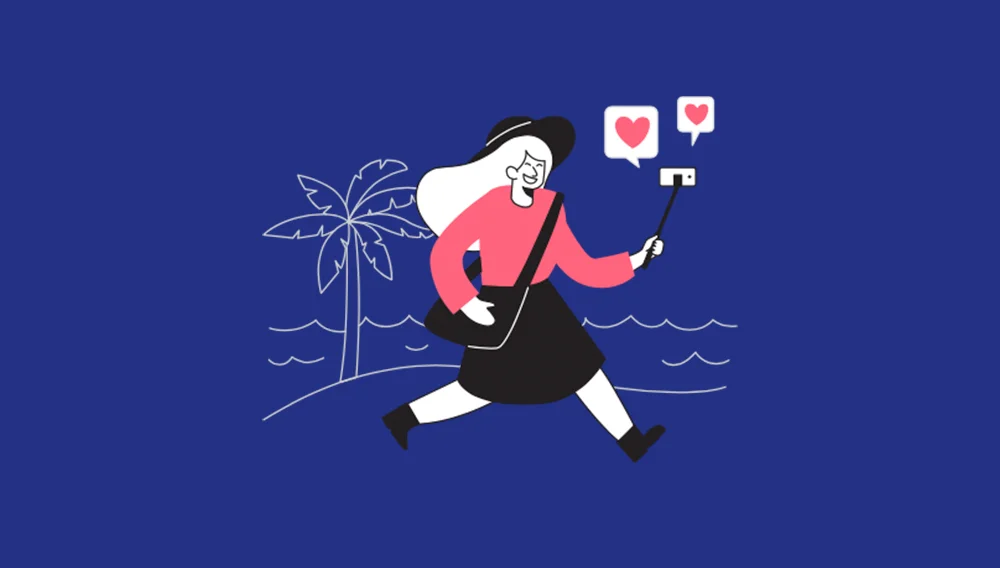“…[if] there’s already a foundation of reviews from nano and micro influencers, then customers will take notice…”
One only needs to spend a few minutes on apps like Instagram or TikTok to realize that influencers dominate the digital social landscape. All it takes is one especially aesthetic image or stylish dance to launch a trend into viral orbit to make its rounds across the internet. Oftentimes, it’s celebrities or mega influencers with millions of followers dictating trends, but these are hardly long-lived affairs. Usually, they fade just as quickly as they burst onto the scene.
However, some companies like the global K-beauty brand Isntree, have recognized the real power behind social media lies with micro influencers—creators with less than 25,000 followers—rather than those with megastar status. Picky Creators recently sat down with Eric Choi, Isntree’s Global Business Lead, for an interview about the company’s unique approach to influencer marketing and how the Picky Creators platform has helped them streamline their seeding process. Let’s take a look at what he had to share:
Can you briefly introduce the brand Isntree?
Our CEO, Jinwoo Kim, was one of the original cosmetic bloggers in Korea, and used his knowledge about cosmetic ingredients to found Isntree in 2009. After we began exporting internationally about 4 years ago, we’ve seen rapid growth in the international market, with our total sales increasing from 3.8 billion KRW in 2018 to an expected 20 billion KRW in 2022. When I joined the company in March of 2020, the ratio of domestic to international sales at that time was about 7:3. This year, it’s 2:8.
At Isntree, our vision as a green beauty brand is to combine familiar natural ingredients with functional ingredients in an optimal formulation that has safe yet positive impacts on the skin.
What was your focal point for rapid international growth?
We think hard about how to score high with low costs. To reduce costs, Isntree has largely focused on seeding and marketing through nano and micro influencers with between 500 to 25,000 followers.
Also, a good product is different from a bestselling product. Anyone can make and develop a good product, but no matter how good the product is, if consumers can’t try it or experience it then it won’t be a bestselling product. Nowadays, there are numerous K-beauty manufacturers, and the production and product quality has increased quite a bit. So now, the competition is about consumer experience. Therefore, our brand’s main focus has been on expanding the opportunity for consumers to try and experience our products.
What marketing strategy did you use for the brand/product experience?
We have three stages when it comes to our marketing strategy:
- Determining product quality
- Validating marketing potential
- Mega influencer advertising
We need to determine whether we have a good enough product that can be marketed. We validate whether the product can go viral by testing with nano and micro influencers. This gives us an idea of the level of the product’s potential based on feedback from the influencers. If there is an issue in the second stage, we return to stage 1 and begin testing on the product level again. Then, if we receive enough positive reviews from stage 2, we progress to stage 3. Of the three stages, the first two can be completed using the Picky Creators platform. Without Picky Creators, everything would probably take longer; we might miss the right timing or have delays in the process. But through this platform, time issues are greatly reduced.
Why did you choose to focus on micro influencers rather than mega influencers who are known to have more impact?
Of course mega influencers are important, but when there’s not much information out there [on a product] will a mega influencers’ advertisement really be effective? Would simply collaborating with mega influencers increase sales? Or help branding? I don’t think so.
For example, let’s say we advertise with BTS’ Jin [without any pre-marketing]. It wouldn’t be more than a simple commercial. Because when people search for our product or brand, if there isn’t any information it’s only about BTS’ Jin, and I don’t think that’s sustainable for the long term. However, when BTS’ Jin gives the product a shout-out and there’s already a foundation of reviews from nano and micro influencers, then consumers will take notice that it isn’t just an advertisement because there are many sincere, positive or negative reviews from others. When these reviews exist that’s when a mega influencer has power.
What do you think of the Picky Creators service?
When I first heard about creator services, I didn’t even need five minutes of debate.
First, from a cost standpoint, there is huge potential to save because the services being run right now cost between $100-$150 per influencer to make content, and for brands that isn’t an easy price to meet. Second, time is more valuable than money. Before, we had to contact each influencer individually, ask for a collaboration, negotiate and schedule, but now all of this can be completed within the Picky Creators platform. Plus, Picky already has a pool of influencers, and these influencers already have a level of interest and knowledge about skincare.
In the case of our sun stick challenge, we were able to secure content from a number of creators in a very short amount of time. Picky really supported this process, and using Picky Creators, we were able to proceed quickly and cost-effectively.
So, if all brands do product seeding and influencer marketing, why do some brands go viral and others don’t?
Even if other brands try to do the same seeding or same influencer marketing, they should know their own seeding target, seeding amount or types of influencers they are looking for. You can’t just be like, “Isntree is seeding 300 products, let’s try 400.” It wouldn’t guarantee anything. A brand needs their own strategy, values and philosophy that’s tailored to them in order to decide how they will present themselves to customers.
Since our CEO started as an ingredient blogger and expert, his involvement in product development and planning is very high. And because he’s meticulous, we are able to create products with good ingredients and optimal formulas. So as far as product quality, we are thoroughly prepared. However, I think the challenge now lies in how we’ll play the field with our products.
What is next for Isntree?
We are thinking of increasing the physical amount [of products]. Since we increased our marketing budget, the amount of seeding will be increased as well. Next year, rather than simple product exposure, we will plan more opportunities for brand experience through a physical space or events. Also, our bestselling sun gel, in particular, is a product that’s making huge sales. So beyond this, we have the desire to make more bestsellers. We’re confident in this, so we are constantly trying with the three steps I mentioned earlier. Finally, we’d like to break out of the limits of K-beauty. In 10 years’ time, we’re hoping to see an Isntree that’s a global beauty brand. More than just producing good products, we want to be a brand that offers a good experience.




